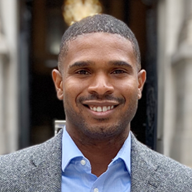
Quinton Smith
Samueli School of Engineering
University of California, Irvine
Irvine, CA 92697
Quinton Smith received his bachelor’s degree from the University of New Mexico in chemical engineering and his Ph.D. in 2017 from Johns Hopkins University in chemical and biomolecular engineering. His predoctoral research was supported by an NIH/NHLBI F-31 and NSF Graduate Research Fellowship. Additionally, he was named a Siebel Scholar in 2017. After completing his doctorate, he trained as a Howard Hughes Medical Institute Hanna Gray Postdoctoral Fellow at the Massachusetts Institute of Technology. He will join the faculty as an assistant professor in spring 2021.
Ph.D., Johns Hopkins University, Chemical and Biomolecular Engineering
Research in Lay Terms
Miniaturization technologies from the electronics industry enable engineers to build models of human physiology. In particular, these technologies permit the control of interactions between individual cells and their physical microenvironment as well as spatial information such as gradation in chemical signals. Coupling these powerful tools with stem cell and organoid technology allows precise re-creation of a tissue’s natural environment in the body. Smith’s lab will leverage these organ-on-chip model systems to uncover new biology as it pertains to human development as well as studying how organs maintain homeostasis, become diseased and regenerate.
Research Focus
The field of tissue engineering is rapidly evolving. Human-induced pluripotent stem cells (hiPSCs) have begun to address the limitations of cell sourcing. The biophysical and chemical complexity of human tissues can be mimicked with synthetic materials and engineered microdevices. The marriage of these technologies enables the controlled administration of developmental cues for the study of stem cell differentiation behavior. Additionally, implantation of these immunologically competent cells within engineered extracellular matrices can act in concert to augment or replace diseased tissue in vivo. Given the strength of these platforms, my lab will focus on bridging the gap between fundamental stem cell biology and clinical applicability of hiPSC derived cellular therapies. In particular, my lab will (1) focus on distilling the complexity of early human development to controllable factors, which allow computational modeling of early fate specification. (2) Next, my group will focus on creating synthetic biomaterials that support the differentiation and expansion of stem cell-derived organoids. (3) Finally, with microfluidic and bio-printing mediated assembly, my team will build small and large-scale vascularized tissues from single donor iPSCs for regenerative medicine applications.
